How Outsourcing can Transform your Organisation
The data centre is the bedrock of the insight economy. To be competitive, enterprises need IT infrastructure that can process data at scale, on a cost-effective basis.
However, many organisations don’t have access to the internal expertise and resources they need to keep the data centre performing at the highest level. This leads many organisations like Netflix to look to outsourcing as a force multiplier.
In fact, Forrester research finds that nearly 60% of organisations are looking to outsource or partner with a provider to transform their operations. This way, organisations can focus on daily innovation without getting sidetracked by the complexity of managing increasingly complex infrastructure.
Many services can be outsourced to third-party providers. These can include hardware installation and maintenance, management of computing and storage resources, systems configuration, uptime management and monitoring of application and service performance. Also, database administration, backup and disaster recovery services, physical access control and incident response.
Making data centre insights cost-effective
The main reason most organisations outsource the management of the data centre is cost. Building and maintaining a data centre is extremely costly, particularly for larger organisations that not only need to invest in physical space but servers, infrastructure, power, security access controls and specialist IT staff.
As a result, many organisations turn to outsourcing as a way to lighten these costs without sacrificing their operational excellence.
“Outsourcing is a very common business activity for enterprises of all sizes, across industries,” said Naveen Chhabra, Forrester principal analyst. “Tech leaders outsource for many reasons including staff augmentation, cost efficiency, strategic direction/alignment, ability to focus on its own strengths and innovation.”
The right partner, the right balance
The core financial argument for outsourcing management of the data centre is that “outsourcing provides the ability to minimise upfront capital expenses, and benefit from the economies of scale that an experienced data centre provider will offer,” said Leo Casusol, managing director of Forgepoint Capital.
Part of that involves renting secure and resilient infrastructure on an ongoing subscription basis at a predictable price that requires less initial investment. Although it’s important to note that this can come at the cost of control. “The right decision — whether to outsource or not — normally comes down to the tradeoff between control over direct hardware and customisation capabilities versus the economic and operational benefits of relying upon a third-party provider,” said Casusol. “If an organisation finds the right partner, the right balance can be achieved.”
Types of data centre outsourcing
At the same time, there are many different forms that outsourcing can take.
There are a few primary types of data centres, according to Brian Lewis, managing director of advisory at KPMG. These include individual client, managed service provider, cloud-based colocation and hyperscale computing.
“Each type of data centre aligns with different business priorities and outcomes which adhere to one of four availability tiers; Tier 4 with 99.99.5% uptime to Tier 1 with 99.5% uptime,” said Lewis.
The organisation can choose which type, tier and associated services meet their priorities, outcomes and budgets. Facilities management, smart hands, IT operations, asset management and monitoring are all services that enterprises can pick and choose to outsource.
Although, it’s important to remember that there’s no-one-size-fits-all solution, and organisations have the option to build services around their own own distinct use cases.
“There is a high-level shift in outsourcing trending toward transformation-enabled deals that bring the right value at the right time,” said Lewis. “Traditional activity based, one-size-fits all, managed service models still exist in the market; however, organisations are increasingly looking for flexible, product and consumer centric contracts to support the needs of the varying needs of their business.”
Colocation as the go-to choice
One of the most widely used examples of data centre outsourcing is colocation. Data centre colocation is where an organisation will rent physical space from a third-party provider so they can store their hardware.
Colocation enables organisations to “leverage existing data centre facilities to rent space for closer proximity to major fibre routes,” said Renest Lefner, chief product officer of network automation provider Gluware.
“Colocation frees up the reliance on personal data centres from having to manage critical infrastructure, which can be some of the most difficult infrastructure to manage, move or relocate in the event of data centre issues or closures,” said Lefner.
Researchers valued the data centre colocation market at $50.3 billion in 2021, and anticipate it will reach $159.8 billion by 2030. Typically, colocated data centre offerings provide temperature controlled, 24/7/365, secure highly-monitored environments populated by servers offering guaranteed performance and uptime.
They are also a good option for organisations looking to reduce risk because they increase resilience against power outages or natural disasters — if a company’s primary site of operation goes down, there is still another site with IT infrastructure online.
The limits of outsourcing
Of course, outsourcing management of the data centre does create new risks that security teams need to be prepared to confront.
“As with any outsourcing, data centre infrastructure comes with increased supply chain risk,” said Claude Mandy, chief evangelist for data security at Symmetry Systems. “This includes the risk of unauthorised access to data and the challenge of securing data regardless of where it is in a hybrid cloud — including public cloud or on-premises. This has driven the focus on data encryption at rest, but more importantly requires organisations to monitor more carefully who is accessing their data.”
Ultimately, these risks are manageable if organisations commit to differentiating the security responsibilities = of the provider from their own and implement adequate security controls and disaster recovery processes.
The key to making this happen is to maintain active communication with third-party vendors.
“Disaster recovery and business continuity plans need to be tested to include data centre partners where the management has been outsourced,” said Timothy Morris, chief security advisor at Tanium. “Plans should be tested frequently and included in incident response plans for both cyber and disaster (fire, flood, tornado, hurricane, pandemic) contingencies.”
Reach out to us today for a complimentary consultation – email info@hbtech.co.nz or phone 0800 423 834.
Please note: This article was written by Tim Keary from VentureBeat and was legally licenced through the Industry Dive Content Marketplace. Please direct all licencing questions to legal@industrydive.com.


